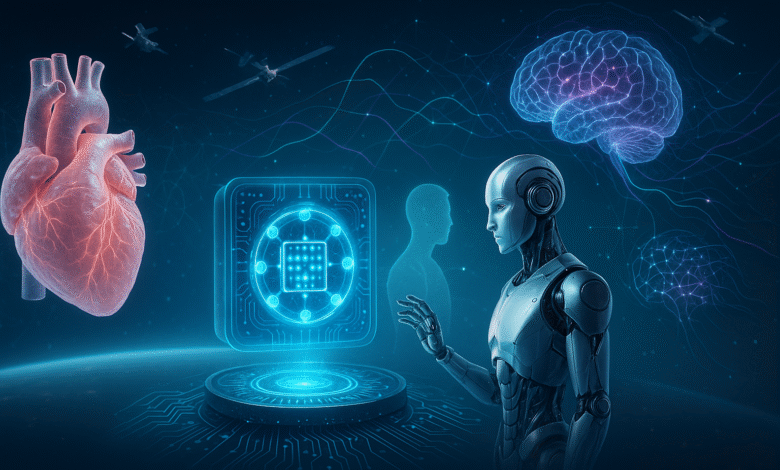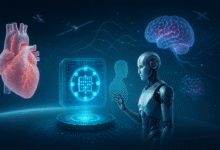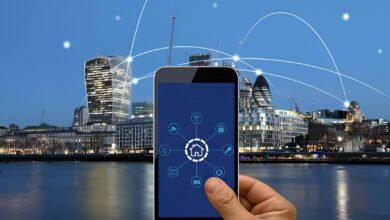The Top 10 Breakthrough Tech Innovations Set to Shape 2026
Discover the top 10 breakthrough tech innovations for 2026, from quantum computing to bioprinting. Learn how these emerging technologies will transform your world.

The year 2026 isn’t some distant science fiction dream anymore. We’re about to witness a convergence of breakthrough technologies that will fundamentally change how we live, work, and interact with the world around us. Unlike previous years where tech innovations felt incremental, 2026 represents a genuine inflection point where multiple emerging technologies mature simultaneously.
Think about it. Just a few years ago, concepts like quantum computing and bioprinted organs sounded like something out of a Star Trek episode. Today, these tech innovations 2026 is bringing to market are transitioning from research labs into real-world applications that will touch your daily life. Whether you’re a business leader planning your next strategic move, a tech professional mapping your career trajectory, or simply someone curious about what’s coming next, understanding these transformations isn’t optional anymore.
The technology trends 2026 we’re seeing represent more than just faster processors or sleeker gadgets. They’re fundamental shifts in human capability, from AI that truly understands context to computers that can solve previously impossible problems. This isn’t hype. Major corporations, governments, and research institutions have collectively invested billions to make these innovations reality. Let’s explore the ten most significant breakthroughs that will define the next chapter of technological progress.
EXPLORE THE CONTENTS
1. Quantum Computing Reaches Commercial Viability
After years of promise and theoretical potential, quantum computing is finally delivering tangible results in 2026. Unlike traditional computers that process information in binary bits (zeros and ones), quantum computers use qubits that can exist in multiple states simultaneously. This isn’t just a technical detail. It means solving complex problems that would take classical supercomputers centuries to crack.
Real-World Applications Taking Shape
The pharmaceutical industry is already using quantum simulations to accelerate drug discovery, cutting development timelines from years to months. Financial institutions are deploying quantum algorithms to optimize massive investment portfolios and detect fraud with unprecedented accuracy. Even logistics companies are tapping into quantum power through cloud-based services, optimizing supply chains in real-time at scales previously unimaginable.
According to McKinsey’s Quantum Technology Monitor, the quantum computing market alone could generate up to $72 billion in revenue by 2035. But 2026 marks the crucial transition year when businesses beyond tech giants can access quantum-as-a-service through cloud platforms. The shift from “more qubits” to “better qubits” through improved error correction means these systems are finally reliable enough for mission-critical applications.
The Security Challenge
With great power comes great responsibility. Quantum computers pose a genuine threat to current encryption standards, potentially breaking security protocols that protect everything from banking transactions to government communications. That’s why post-quantum cryptography and quantum communication networks are developing alongside the computing hardware itself.
2. Artificial Intelligence Becomes Truly Contextual
Artificial intelligence has been grabbing headlines for years, but 2026 marks a qualitative leap forward. The AI systems emerging now don’t just process information faster. They understand context, read emotional cues, and adapt to individual needs with a sophistication that makes previous generations look primitive.
Beyond Simple Automation
The latest AI assistants can detect stress in your voice and proactively suggest wellness interventions. They understand the nuances of human communication, including sarcasm, cultural references, and implied meaning. In business settings, these contextual AI systems are transforming customer service from scripted responses to genuine problem-solving conversations that feel authentically human.
Generative AI has evolved beyond creating text and images. The 2026 iterations can generate complex code, design entire product lines based on market trends, and create personalized educational content that adapts in real-time to each learner’s pace and style. This is one of the most significant technology trends 2026 is delivering because it amplifies human creativity rather than replacing it.
AI Agents and Autonomous Decision-Making
The emergence of agentic AI represents a fundamental shift. These aren’t tools waiting for your command. They’re autonomous agents capable of making decisions, learning from outcomes, and executing complex multi-step tasks without constant supervision. Around 25% of companies using AI will launch agentic AI pilot programs by year’s end, according to industry forecasts. The implications for productivity and innovation are staggering.
3. Bioprinting Transforms Medicine and Beyond
Perhaps the most jaw-dropping innovation among breakthrough technologies in 2026 is bioprinting. Laboratories are now creating functional mini-organs using living cells and biomaterials. Early clinical trials are exploring transplant-ready organs that could eliminate donor waiting lists within the next decade.
The Technology Behind the Magic
Bioprinting works by precisely depositing layers of living cells, nutrients, and growth factors to create three-dimensional tissue structures. The process mimics how natural organs develop, allowing scientists to build complex tissues that function like the real thing. But the applications extend far beyond human transplantation.
The food industry is using bioprinting to create lab-grown meat that could solve both ethical concerns and environmental challenges associated with traditional agriculture. The technology enables creating complex tissue structures, including the marbling and texture that make meat appealing, without requiring animal farming at scale.
Personalized Medicine Revolution
Bioprinting is making personalized medicine a practical reality rather than a distant dream. Doctors can create patient-specific tissue models to test drug efficacy before treatment, dramatically improving outcomes while reducing adverse reactions. Cancer researchers are bioprinting tumor models that perfectly match individual patients, allowing them to identify the most effective treatment protocols without trial and error.
4. Brain-Computer Interfaces Go Mainstream
Brain-computer interfaces (BCIs) are transitioning from medical miracles to consumer technology. These devices create direct communication pathways between the human brain and computers, bypassing traditional input methods like keyboards or touchscreens entirely.
Medical Applications Lead the Way
For individuals with paralysis or severe mobility limitations, BCIs are literally life-changing. Users can control prosthetic limbs with their thoughts, operate wheelchairs through neural signals, and communicate despite conditions that would otherwise render them unable to speak. The precision and responsiveness of 2026’s BCI technology represents a quantum leap from earlier experimental systems.
Consumer Applications Emerge
Beyond medical uses, consumer BCI products are hitting the market. Gaming companies are developing immersive experiences where players control characters through thought alone. Productivity tools allow workers to navigate computer systems faster than traditional interfaces permit. Early adopters report that after a brief learning curve, controlling devices through neural signals feels remarkably intuitive.
The technology raises important ethical questions about privacy, data security, and the nature of human-computer interaction. These conversations are critical as BCIs become more widespread, ensuring the technology develops in ways that respect human autonomy and dignity.
5. Space Economy Takes Off
Space is no longer the exclusive playground of billionaires and government agencies. The space economy is becoming accessible to a broader population in 2026, with suborbital flights available for under $100,000 and orbital hotels planned for weekend getaways.
Space Tourism Becomes Reality
Multiple companies are now offering commercial space flights with improving safety records and falling costs. While still expensive by most standards, the trajectory is clear. Space tourism is following the same pattern as early commercial aviation, where what begins as a luxury eventually becomes accessible to middle-class consumers.
Space Mining and Manufacturing
The really transformative potential lies in space-based industry. Startups are eyeing asteroids rich in rare earth elements and precious metals, potentially unlocking resources worth trillions. Manufacturing in microgravity enables creating materials and structures impossible to produce on Earth, from ultra-pure crystals for semiconductors to novel alloys.
Space-based infrastructure is also emerging. Satellite networks providing global internet coverage are expanding rapidly, bringing connectivity to remote regions and enabling new applications in agriculture, disaster response, and environmental monitoring.
6. Advanced Robotics Enters Everyday Life
Robotics has escaped the factory floor. The 2026 generation of robots are smarter, more adaptable, and significantly cheaper than their predecessors, making them practical for homes, restaurants, construction sites, and caregiving facilities.
Robots That Learn and Adapt
Thanks to advances in AI and machine learning, modern robots aren’t single-purpose machines anymore. They’re general-purpose platforms that can tackle diverse tasks after brief training periods. Construction robots are building houses faster and safer than traditional methods. Caregiving robots are providing companionship and assistance for elderly individuals, addressing one of society’s most pressing demographic challenges.
In restaurants and hospitality, cooking robots prepare meals with consistency and precision that rival skilled chefs. These systems don’t replace human workers entirely but rather handle repetitive tasks, allowing people to focus on creativity, customer interaction, and problem-solving.
The Human-Robot Collaboration Model
The most successful robotic implementations in 2026 embrace collaboration rather than replacement. Robots handle dangerous, repetitive, or physically demanding tasks while humans provide judgment, creativity, and emotional intelligence. This hybrid model is proving more effective than either pure automation or traditional labor-intensive approaches.
7. Next-Generation Cybersecurity Rises to Meet Quantum Threats
As computing power explodes and attack surfaces expand, cybersecurity has become a boardroom priority. The cost of cybercrime is projected to reach $10.5 trillion annually by 2025, making robust security infrastructure essential for organizational survival.
AI-Driven Threat Detection
Traditional cybersecurity relied on identifying known threats and building defenses around them. Modern systems use AI to detect anomalous behavior patterns, neutralizing threats before they spread. These intelligent security platforms learn continuously, adapting to new attack vectors faster than human security teams could respond.
Zero-trust architecture is becoming the standard approach. Rather than assuming anything inside the network perimeter is safe, zero-trust systems verify every access request regardless of origin. Combined with AI-powered threat detection, this approach dramatically reduces vulnerability to both external attacks and insider threats.
Post-Quantum Cryptography
With quantum computers threatening current encryption standards, the race is on to deploy post-quantum cryptographic systems. These new protocols use mathematical problems that even quantum computers struggle to solve, ensuring data security in the quantum era. Major financial institutions and government agencies are already implementing post-quantum encryption for their most sensitive communications.
8. Renewable Energy and Sustainable Tech Reach Tipping Points
Sustainable technology and renewable energy are no longer just environmental nice-to-haves. They’re economic imperatives driving massive innovation and investment in 2026. The convergence of improving technology, falling costs, and regulatory mandates is accelerating the clean energy transition.
Energy-Efficient Computing
The tech industry’s enormous energy appetite is forcing breakthrough innovations in energy efficiency. New chip designs, advanced cooling systems, and renewable-powered data centers are making it possible to expand computing capacity while reducing environmental impact. Companies are competing on sustainability metrics alongside traditional performance benchmarks.
Alternative jet fuels made from used cooking oil, industrial waste, and captured atmospheric gases are becoming a big business. Government mandates requiring their use in aviation are creating market demand that’s driving rapid scaling and cost reduction.
Green Hydrogen and Novel Energy Storage
Green hydrogen production using renewable electricity is reaching commercial viability. This clean fuel can power industries that are difficult to electrify directly, from steel manufacturing to long-haul shipping. Advanced battery technologies and novel energy storage solutions are solving the intermittency challenges that have long plagued renewable energy adoption.
9. 5G Evolution and Edge Computing Transform Connectivity
5G networks are maturing beyond the hype, delivering on promises of ultra-low latency and massive device connectivity. But the real story for 2026 is how 5G combines with edge computing to enable applications that were previously impossible.
Real-Time Applications Become Practical
Edge computing processes data near its source rather than sending everything to distant data centers. Combined with 5G’s speed and reliability, this architecture enables real-time applications in autonomous vehicles, remote surgery, smart manufacturing, and augmented reality. The technology is particularly transformative for Internet of Things (IoT) deployments where millions of sensors and devices need to communicate and respond instantly.
Smart cities are leveraging this connectivity to manage traffic flow, optimize energy usage, and improve public safety. The combination of ubiquitous sensors, edge processing, and 5G connectivity allows cities to respond dynamically to changing conditions, from rerouting traffic around accidents to adjusting building temperatures based on occupancy patterns.
The Path to 6G
While 5G rollout continues, research into 6G technology is already well underway. The next generation promises even faster speeds, lower latency, and the ability to support unprecedented device density. Early implementations could arrive by decade’s end, but the 5G infrastructure being deployed now is designed with future upgrades in mind.
10. Personalized AI Education Transforms Learning
Education is experiencing a technology revolution that’s fundamentally changing how people learn throughout their lives. AI-powered tutoring systems don’t just deliver content. They adapt in real-time to each learner’s style, pace, and knowledge gaps.
Adaptive Learning Platforms
Modern educational AI analyzes how students interact with material, identifying exactly where comprehension breaks down and adjusting explanations accordingly. These systems provide personalized feedback that keeps learners engaged without the frustration of being either bored by material that’s too easy or overwhelmed by content that’s too advanced.
The implications extend far beyond traditional schooling. Adults use these same tools for career reskilling and professional development. As industries transform rapidly due to automation and AI, the ability to learn new skills efficiently becomes crucial for workforce adaptation.
Democratizing Quality Education
AI tutors are making world-class educational experiences accessible regardless of geography or economic status. Students in remote areas can access the same quality instruction as those in prestigious schools. The technology is breaking down barriers that have perpetuated educational inequality for generations, though challenges around digital access and infrastructure remain significant.
The Convergence Effect
What makes 2026 genuinely transformational isn’t any single innovation in isolation. It’s how these breakthrough technologies amplify each other. Quantum computers accelerate AI development. AI improves robotics and bioprinting precision. Advanced connectivity enables edge computing applications. Renewable energy powers the massive computational infrastructure these technologies require.
This convergence creates emergent possibilities that none of these technologies could achieve alone. A quantum-enhanced AI running on sustainable energy infrastructure, accessed through brain-computer interfaces, processing data from IoT sensors at the edge could solve problems we haven’t even imagined yet.
The organizations and individuals who understand this interconnected landscape will have enormous advantages. Those who view these technologies in isolation will miss the bigger picture. The future isn’t about picking winners among competing technologies. It’s about recognizing how they weave together into a fundamentally different technological ecosystem.
Challenges and Considerations
While these emerging technologies offer tremendous promise, they also raise important questions. The energy demands of AI training and quantum computing are substantial. The ethical implications of brain-computer interfaces and pervasive AI surveillance require careful consideration. The economic disruption from automation could exacerbate inequality if not managed thoughtfully.
Cybersecurity becomes more critical as our dependence on interconnected systems deepens. A quantum computer breaking encryption could compromise everything from banking to national security. The development of post-quantum cryptography needs to stay ahead of quantum computing capabilities, which requires unprecedented coordination between researchers, industry, and government.
Regulatory frameworks are struggling to keep pace with technological change. How should we govern brain-computer interfaces? What privacy protections do we need in a world of ubiquitous AI? Who’s liable when an autonomous AI agent makes a consequential decision? These aren’t merely academic questions. They require practical answers as these technologies move from labs into society.
Preparing for the Future
Understanding these technology trends 2026 is bringing to fruition is just the starting point. The real question is how to prepare. For businesses, that means experimenting with these technologies now rather than waiting for perfect clarity. The companies that learn by doing will develop competitive advantages that laggards can’t easily replicate.
For individuals, it means cultivating skills that complement rather than compete with automation. Creativity, emotional intelligence, complex problem-solving, and ethical reasoning become more valuable as routine cognitive tasks get automated. The ability to learn continuously matters more than any specific technical skill, given how rapidly the landscape evolves.
Policymakers face the challenge of creating regulatory environments that protect citizens without stifling innovation. Getting this balance right requires understanding both the technologies themselves and their potential societal impacts. International cooperation will be essential, as these technologies don’t respect national boundaries.
Conclusion
The tech innovations 2026 is delivering represent more than incremental progress. They’re fundamental shifts in human capability that will reshape every industry and aspect of daily life.
From quantum computers solving impossible problems to bioprinted organs saving lives, from AI that truly understands context to robots that work alongside humans, these breakthrough technologies are transitioning from research labs to real-world applications.
The convergence of these innovations creates possibilities that individually they could never achieve, marking 2026 as a genuine inflection point in technological history. Whether you’re leading a business, planning your career, or simply navigating daily life, understanding and preparing for these transformations isn’t optional anymore—it’s essential for thriving in the rapidly evolving world ahead.







